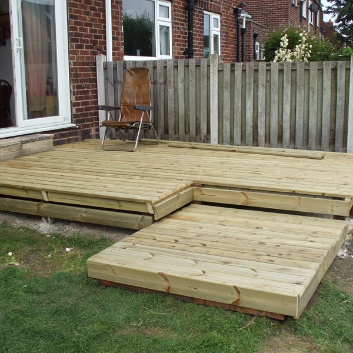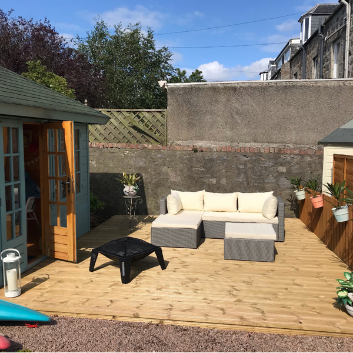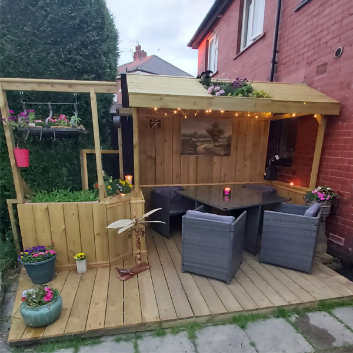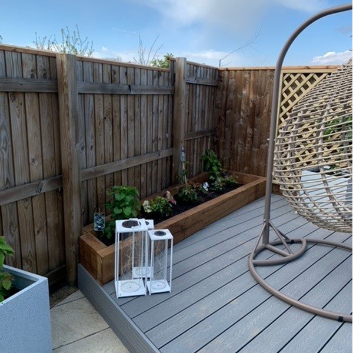There are no products listed under this category.
Decking Boards
What is composite decking?
Composite decking also known as plastic decking is a synthetic material made from wood fibres, HDPE plastics and bonding agents. This mix is heated, formed into board shaped lengths and then cooled to form a wood-plastic composite material that is denser, stronger, and heavier than wood alone. Composite decking is increasing in popularity with homeowners due to its authentic look and low maintenance needs.
If you choose to buy timber decking, although it is a good choice, don’t forget to buy stains or oil to ensure that it looks its best for longer, and keep in mind that there will be some further spend required over the lifetime of the decking to maintain it.
Decking Boards are a simple way of transforming your outdoor space into something amazing and are available in a variety of sizes in softwood and hardwood, plus thermally treated options are available.
Wider Decking Boards
Wider decking boards are the most suitable for decking a larger area. If you have a long, thin decking, putting wide boards at right angles to the long side of your decking can give the illusion of a larger decking.
Narrow Decking Boards
Opting for narrow decking boards in a smaller area can create an eye-catching feeling, you will require more decks to cover a smaller space and the eye will perceive the area to be larger than it is merely because of the amount of decking boards
Softwood is always redwood and are treated to UC3u and dedicated for use above ground.
Timber Decking TOP TIP:
The use of a CAMO Marksman Edge allows you to insert hidden deck fasteners discretely into the edge of your board, without any gaps between each plank. This means that the tool can be used on any size of decking. As such, this is an option for use on exceptionally wide boards, however, please note that there won’t be a spacer to guide the user, therefore if you would prefer the use of a spacer, we recommend the CAMO Wide Board Marksman Pro
Where to use Timber Decking Boards
Concrete. Decking Boards are a great solution for covering concrete that has been damaged and become unsightly over a period and, decking boards are a great deal nicer.
Problem Solving
If your garden is renowned for being boggy or generally damp, it’s easy to not want to spend time in it because garden furniture is likely to sink into it. However, decking can help raise your outdoor space above it.The same goes if you have a particularly uneven garden perhaps because you live on a hill. Decking can be used to create an area that is level for tables and chairs.
Grooved Boards are an ideal option if you are placing them by a pool or water feature, as the grooves allow water to run-off quickly. However, it is important to note that they are only effective for this purpose if they are used in shorter lengths. If you intend/need to use longer decking lengths, Smooth Boards are a better option.
At Howarth Timber & Building Supplies we have a wide range of decking boards, as well as a variety of C16 and C24 timbers that can be used as part of your project. We also offer a wide selection of composite decking, whilst our Garden & Landscaping range will help you to complete your garden project.
Frequently Asked Questions
How to guides
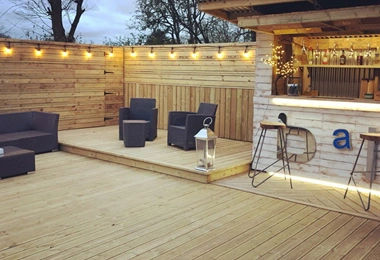
Garden decking ideas
Looking for inspiration? Discover how to build a deck that perfectly suits you with so many options to suit outdoor spaces of any size and shape.

How to build a deck
A step by step guide on how to build a deck.
Customer inspiration
